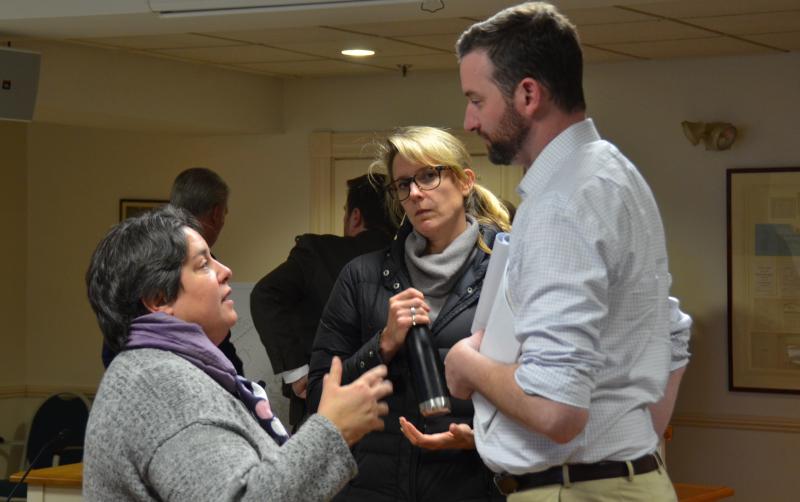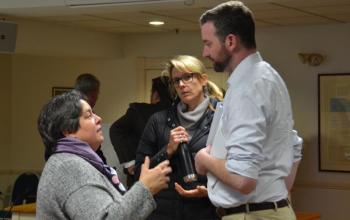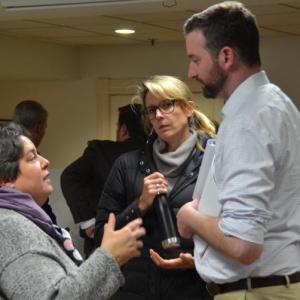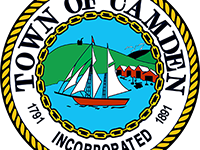Michael Mullins: A letter about Jan. 10 School Board decision
The following is a letter submitted by Michael Mullins to the MET/Camden Workspace Interest Group about the Jan. 10 Camden-Rockport School Board decision to reject his proposal to purchase and repurpose the Mary E. Taylor school building on Knowlton Street in Camden.
Dear Friend of MET,
Two weeks have passed since the special meeting of the Camden-Rockport School Board on January 10. At that meeting, the board voted to reject the Camden workspace proposal, but to allow the Superintendent to continue discussions with me.
The discussions that evening about the proposal ranged, but the central reason cited by the School Board chairman for rejecting it was that the consulting architect, Tyler Barton of Oak Point Associates, said he did not know if the conceptual plan I presented that evening would or would not affect a limitation for permitting he referred to as the "New Impervious Surface Area" calculation.
On the basis of this comment, the chairman, Matt Dailey, moved to reject the proposal.
Discussion ensued and the motion was modified to include language about the Superintendent being allowed to discuss the Camden Workspace concept further with me.
Superintendent Libby mailed me on January 12 to advise me in writing of the rejection, and said that if the School Board repurposes the MET for the District's needs, she would be interested in leasing the basement for elements of my proposal.
I sent Ms. Libby a letter Sunday, Jan. 21, asking for clarification about two things; 1) what uses would happen in the floors above the basement (would they be compatible with banging and sawing), and how would the school provide code-compliant access, if the elevator and stair tower are taken down as shown on Oak Point's plan?
In an emailed response, Ms. Libby demurred on those questions, but said that any forthcoming proposal would look like the one rejected by voters a year ago (my understanding is that this was $3 million or so for a comprehensive renovation.
.......
Anytime one submits a proposal for a public disposition process, one understands that it may or may not be accepted. That's implicit in the offering. My impression on this process is that the School Board thought a great deal about the offering for proposals, and posted a memorandum on the matter, but didn't necessarily have a process ready for the review of any proposals that would ultimately come in. This is not a criticism of the Board in any way. I understand that things happened very fast last year, and the window for proposals was in some ways, to test the waters and see what if anything would materialize.
However, process would prove to be paramount. In a private meeting with Chairman Matt Dailey, Superintendent Maria Libby, and the district's attorneys from Drummond Woodsum on December 21, 2017, the School Board leaders and I talked frankly about the need to come to an agreement, if the Board so moved, in time for a referendum to be prepared no later than April 12, 2018.
Thus we worked back from there, and discussed a deadline to have a nonbinding agreement by March 31, 2018, and conclusion of due diligence by February 28, thus allowing the whole month of March to negotiate a detailed agreement. Ms. Libby put forward that a three-party agreement with the Town might make sense, informing me that any sale of school real estate must first be offered to the Town.
.....
In an email prior to that meeting, Ms. Libby had informed me that the purpose of the meeting was to ensure that there were no deal breakers in the proposal that would leave it 'dead on arrival' at the special meeting. I told Ms. Libby subsequently that I wanted to revisit the demolition of the elevator. She warned me that the architect told her there was no room to shift the parking lot because it would affect the playground. What I told Ms. Libby was that I was confident the parking lot would not need to move.
And so, the day before the Special Meeting I received by conceptual rendering and conceptual site plan and presented them on the 10th. Several people have since asked me how I felt about the Board's decision that night, and was I upset about it?
All I can say is that, while I was prepared for the decision to go either way, as is the case with public deliberations, I was surprised by the lightning-quick disposition of it, when it appeared to me that Mr. Dailey read a prepared motion to reject the proposal, and later refused to amend his motion to allow further consideration, or as School Board Member Elizabeth Noble put it, not to close the door on it.
Candidly, I felt unprepared for two aspects of the quick decision. First, after having had explicit discussions with the Board Chairman and the Superintendent about a proscribed due diligence process, and appointing a subcommittee to work through the issue with me, neither of those approaches, which are typical in a private/public initiative such as this, even came up as options during the deliberations.
I could not determine if the Board leadership had discussed these aspects of the process with the Board members, or not, because no one on the board moved for either.
Second, the reason for concern cited by Mr. Tyler Barton was that he was unsure of the amount of impervious area generated by the new entrance and loading dock I presented in the conceptual site plan. Mr. Dailey cited that in light of these changes (that exceeded the 1925 footprint of MET), he could not be comfortable going forward with anything that might delay the permitting process.
Again, I will be candid in my reaction to this.
While the specific calculations were not presented by Mr. Barton, this seemed to me to be a technical matter, and the problem of 'making adjustment' in site planning for development efforts is definitely... routine.
Indeed, Mr. Barton, in even a 20 minute recess, probably could have estimated the impact using a ruler, and offered a more concrete conclusion. Nonetheless, I signaled Board Vice Chairwoman Lynda Chilton, who presided over the discussion, and I stood and stated that neither the vestibule nor the loading dock were necessary components of my proposal, and as the demolition of the middle school would not occur for two years, that we could ignore those features for the time being, which would therefore not impact the calculation.
Alas, no quarter was given to that suggestion, and the Board voted as it did, to reject the proposal, in Mr. Dailey's words that I shall paraphrase, so that the board could put this behind it and move on.
.....
Since that meeting, supporters of MET have sent me two emails from Chairman Dailey explaining that the reason for the rejection was the potential impact to the schedule, due to this impervious issue, and that the permitting issue was paramount. In one of the emails, he said that the proposal would not be reconsidered by the Board.
The Board acted in accordance with its charter, as far as I can tell. And there are no guarantees for a venture like this, which is frankly, part of the attraction of attempting it. It's a challenging endeavor for someone like me, and I enjoy the public process, including meeting people in a community. However I was left wondering, if the schedule was so tight that no substantive technical review could take place, and the resources so limited that no more than one hour of architect time was allotted, then why was the November 30 proposal deadline chosen in the first place?
My proposal was countered by the Board Chairman who said that there wasn't enough time to work through any of the detail, and that the board needed to move on.
With all due respect to the Board Chairman’s position, it wasn't as if I walked in the room with snow on my boots saying, "hey I just had an idea for the MET."
I submitted my proposal according to the School Board's schedule, by the November 30 deadline, pursuant to their requirements. I had a private meeting at the Superintendent's request to make sure there were no deal-breakers, and none were identified but Ms. Libby, Mr. Dailey, or the Board's attorneys.
The attorneys gave me a list of questions I was asked to address at the time of my presentation. If any were unanswered in my presentation, the Board members did not bring them up.
Further, I had a pretty open discussion with Ms. Libby about adjustments to the entrance of the building back in December. Ms. Libby didn't give me any pre-warning about this being a deal-killer, except to the extent that the architects didn't want to shift the parking lot, or the playground. So based on her feedback, I produced a plan that moved neither of those features. The only impact was a relocation of four parking spaces to the rear of the MET, and a vestibule and some other landscape features — all minimal stuff.
Regarding the New Impervious Surface Area calculation, this is something of a self-imposed constraint on the part of the architects, since as Mr. Barton stated, none of the existing hardtop or buildings count against the impervious calculation, AND Oak Point Architects eliminated 35 parking spaces next to MET (the existing lot), something they did not have to do to begin with.
As such, Oak Point could simply retain the MET parking spaces, as I proposed, which would allow them to eliminate 30 spaces elsewhere on their plan, and win back 7,500 square feet or so of slack on the New Impervious Surface Area calculation, an area roughly the size of the MET building itself — leaving room for the 2,000 square feet we might need for sidewalks and entrances, plus another 5,000 square feet for anything else the School might want to add to the plan.
I don't mean to weigh this message down with details. I just mean to express that, while the Board did what it did, I'm not sure what the Board had considered would happen, in terms of schedule.
The offering for proposals, in fairness to both sides, did not provide a lot of detail, neither on the design requirements, nor on the review process. So I think we were all left searching for our footing as to how to proceed.
As for why it didn't pass, I think the answer is that it was for a variety of different reasons because the board members all sounded complimentary about my initiative, which I truly appreciate — (one asked if I would consider making it a nonprofit and suggested it would receive strong support in the community, for example), but nonetheless voted it down.
If I am convinced about anything, it's that perhaps there was only a weak consensus at best to call for proposals last year. I only became aware of the opportunity in early November of 2017 myself, so I can't provide any answer to that.
....
As for now, I have been asked where the Camden Workspace proposal stands. It depends on whom you ask... I think I understand the School Board is not ready, at least now, to consider in earnest any disposition of the building. And that's OK. So nothing is happening anytime soon. Chairman Dailey has said the Board will not reconsider the Camden Workspace proposal.
As for me, I'm ready to move ahead, if the Board wants to reconsider it at any time in the near future, and I'm prepared to continue the discussions with Ms. Libby.
The Superintendent, on her part, seems to be most interested in bringing back the full renovation of the MET for administrative offices, and said she would like to lease the basement in that event.
There appears to be a possible alignment of interests, wherein if the voters approve new administrative offices, the MET can be saved, and some elements of my idea could happen there... down in the basement :)
If that is the outcome, I am ready to talk in detail with Ms. Libby about it. I sense there could be a great collaboration opportunity there. It would however mean a very different proposal from that which I presented. Coworking is not suited for the basement, for example, but some others components would be, such as the culinary component, if the ventilation requirements compatible with the district's offices. Also fiber arts, or some kind of 3-d printing facility may work.
In the meantime, it's been great to meet and to interact with so many of you, and with other stakeholders who are not on this email list. I am really pleased to have been a part of this process and my only regret is that this issue of whether or not the School District can afford to preserve the MET has divided the town.
I won't finish this letter without mentioning the tremendous, moving voices of support for this makerspace initiative, particularly those citizens of Rockport and Camden who spoke up at the January 10 special meeting. I didn't realize I had struck such a chord with this concept. The enthusiasm is terrific and don't worry, I still want to find a way to make this project happen.
.....
In an effort to provide a path that will satisfy both the School Board, and the historic preservationists, today I submitted a 'Preservation Plan' to the School Board, that would keep the building on 'hot idle' while the Town of Camden and the School District decides what it's best use is. The letter I sent to the School Board, is a summary of my investigations into the building, my proposed method for determining the costs to the taxpayer to do so, and my best advice on how to keep the building available for the School Districts's or the public's use (read: Pop Tech, Camden Film Festival, etc), even if no additional bond financing is approved by the voters to renovate it.
I believe the the cost to stabilize and preserve the building, including a new boiler, new electric feed, and maintaining full ADA and life safety access as I outlined will cost less than the current plan to demolish the building, and construct a practice field. That is, that the School District will save money and be able to use the MET, for excess classroom space, for other programs (Zenith), or for overflow administrative space, in its present condition and will little to no further renovation cost. I encourage the School Board to evaluate my preservation plan and I am willing to help with further analysis, if that is helpful to find a way to move forward with a new middle school, with full community support.
And lastly, I will thank the School Board for their time and attention to this, including all the attention from the public, which I'm sure can be a challenge! I think the board members handled themselves well and professionally. In a forum such as that special meeting on the 10th, I try to remind myself that no one on a public board has to say anything, let alone share their thoughts.
Any board member can easily resort to scripted comments when the cameras are rolling, especially. Yet no one on the School Board did that. All of the Board Members spoke candidly, and honestly about their concerns and what they felt their duty was. I admire them for doing so. That kind of interaction is what I love about working with town government. And while it didn't turn out the way I hoped, it was I think a learning experience for all.
Event Date
Address
United States



























